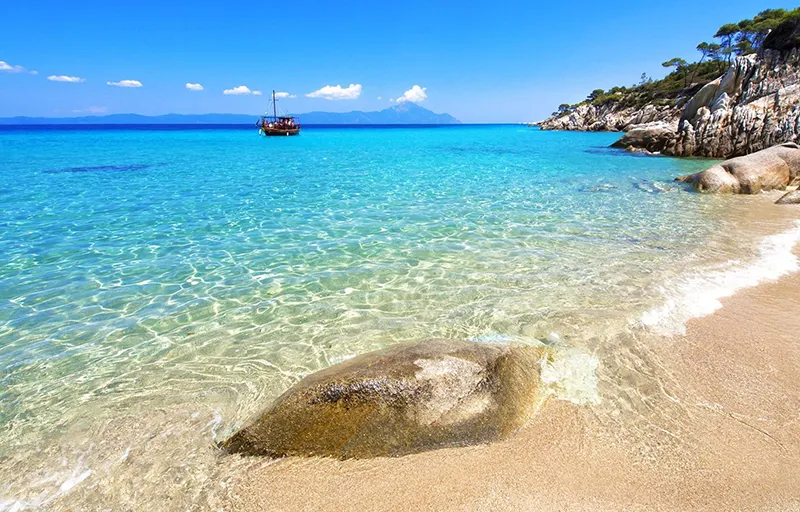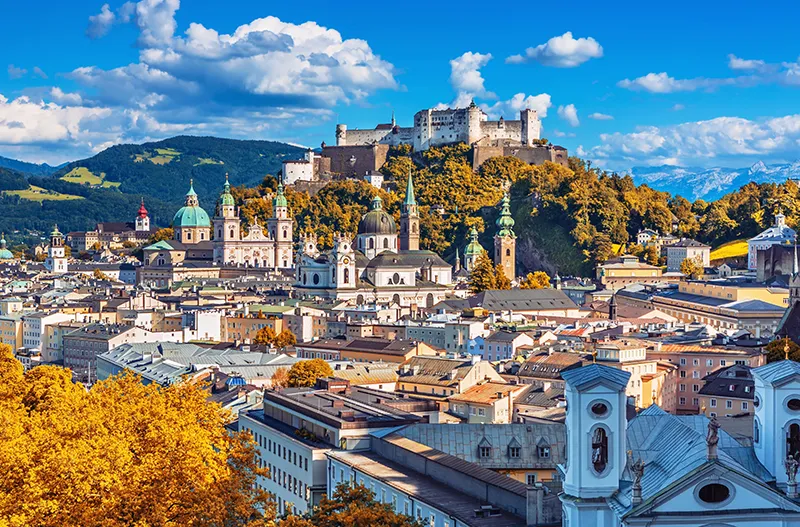In the area of the present city of Glasgow people began to live at least since the Neolithic period. Later the Celts settled here and called the area “Glasgow” (in translation from one of the now defunct Celtic languages, Cambrian, it means “Green Valley”). The Romans also visited the region: on one of the suburbs of Glasgow are fragments of Antoninus’ Roman ramparts.
History
Glasgow’s history goes back to the 6th century, when St Mungo – revered by Glaswegians as their and Scotland’s patron saint – established a monastery on the quiet banks of the River Clyde. The city’s motto: “Let Glasgow prosper,” with these words Mungo ended each of his sermons. In time a small farming village began to sprout up around the monastery walls and a bright future awaited it. So the prayers went where they should…
By the end of the twelfth century the settlement of Glasgow, by then known in the county as an influential religious center, had been granted permission to trade and expand further, and in 1285, a hundred years later, the first bridge over the River Clyde needed to be built to develop new areas for building.
In 1451 Glasgow further established itself in Scotland with the appearance of the University (it still exists today and is considered the largest in this part of the United Kingdom). In the 16th century, life in Scotland became more difficult: there was a confrontation between Protestants, or rather Presbyterians, and Catholics. But Glasgow somehow managed to stay out of the fray. Perhaps because it had not yet acquired sufficient weight in big politics.
During the industrial revolution of the seventeenth century, Glasgow was steadily gaining strength, especially after shipyards and wharves appeared in Newark (now Port Glasgow). Ships sailed from here to the British colonies regularly. And one after another, ironworks, textiles, and various other factories opened ashore. Houses in the city were now built only of stone. More and more workers were needed, and by the early 19th century Glasgow was the fastest growing city in the kingdom, even ahead of Edinburgh. The River Clyde became the city’s main artery and its course was specially deepened. The shipbuilding industry developed on its banks provided the country with half the number of ships needed, and the waters of the Clyde opened access to the resources of neighboring regions. Considerable money was invested in new construction projects: the Kelvingrove Art Gallery and Mitchell Library were opened, by the early 20th century the public transport system began to develop.
But in the 20th century. Glasgow experienced several crises. Both World Wars I and II did not affect the city directly, on the contrary, they brought it military orders, but it was not enough for the stability of the city’s economy. Demand for its products inexorably declined. By mid-century, Glasgow’s population had halved due to declining standards of living. The crisis was so deep that it lasted until the 1980s. The situation changed when the companies whose products were not in demand were fundamentally repurposed. At the same time the formerly predominantly industrial Glasgow developed a new industry for itself – financial operations, developed the service sector and in other directions.
The Glasgow area is divided into several districts: the Trade City, the Business Center, the East End, the West End, the North and the South.
The Trade City and Business Center, located on the right bank of the Clyde, form the central part of Glasgow. It was once the home of the turnpike merchants who made their fortunes in the tobacco and sugar trade. Nowadays, thousands of people rush here every day from all over the city to work: the largest financial companies of Great Britain (including banking groups Barclays, Morgan Stanley, the Royal Bank of Scotland) are based here now.
The West End is the most fun and vibrant part of Glasgow. Many theaters and hotels are located here. Cafes, restaurants, bars, trendy clubs – you can’t count them all, not to mention the many stores. Next to them, in the same area, the university, but these two seemingly completely opposite environments somehow coexist surprisingly peacefully, probably because tolerance towards other people’s tastes, choices, and preferences is in the Scottish blood. In any case, most students prefer to live here, too. The West End is the site of the annual June Festival, when theatrical performances and concerts take place right on the street, and in the evening – carnival processions.
The East End is a historic district of the city that has preserved a solid legacy of centuries past. The main attraction of this place is the majestic Cathedral of St. Mungo, staring into the sky in its Gothic outlines. The cathedral was built in XIII-XV centuries. It was here that the life of Glasgow University began: the first lecture halls were opened and the teachers were from the local clergy.
Not far from St Mungo’s Cathedral are vast areas of the city’s ancient necropolis. This cemetery contains the ashes of many of Scotland’s leading political figures. The place is amazing in its own way: almost every gravestone here is a real work of art. Many of them were created by the most famous sculptors and architects including the Glasgow-born artist, designer and architect Charles Mackintosh (1868-1928), the founder of Art Nouveau style in Britain, but so peculiar in its interpretation that the style is even called “Mackintoshism”.
The southern and northern parts of Glasgow are mainly built up with residential neighborhoods. But while in the south the living conditions are quite comfortable, the north of Glasgow is a rather disadvantaged place. Mostly low-income families live there, the crime rate is high and the death rate from drug addiction is alarming. The city authorities are making serious attempts to restore order here. They are not exhorting the wayward, but creating new jobs, improving the health care system, and building affordable housing. And it seems that the ice has broken: in recent years, the alarming figures have begun to decline.
Up to four million tourists visit Glasgow every year. Many come here specifically for the music festivals that take place every month. Jazz (June) and Celtic music (January) draw the biggest crowds.
General Information
- City in Scotland (the third most populous city in the UK).
- Administrative-territorial division: 21 districts.
- Languages: English, Scottish English (in a dialectal version).
- Ethnic composition: the Scots 89.62%, the English 4.11%, the Pakistanis 2.7%, the Irish 1.59%, the others Welsh, natives of continental Europe, India, China, and Bangladesh. Glasgow can be called the most multinational city in Scotland.
- Religion: nearly two-thirds of the population are Christians, of which 31.5% are Church of Scotland adherents, and 29.2% are Catholics. Atheists make up 22.7%. There are also followers of Islam, Buddhism, Sikhism, Hinduism, and Judaism.
- Currency unit: the pound sterling, the Scottish pound.
- The largest river: the Clyde.
- Most important port: Port Glasgow.
- Most important airport: Glasgow International Airport.
- Area: 175.5 km2, agglomeration: 638 km2.
- Population: 638,650 (2008), agglomeration 2,550,000 (2006).
- Population density: 3,639 people/km2. (2006 г.).
Economy
- The basis of the economy – the service sector.
- The industry: power engineering, mechanical engineering, shipbuilding.
- Services sphere: banking, financial operations, tourism, medical and other services.
Climate and weather
- Temperate maritime (strong influence of warm air masses coming from Atlantic ocean).
- Warm humid winters, cool summers.
- Average winter temperature: +4ºC.
- Average summer temperature: +15.7°C.
- Average annual rainfall: 1205.3 mm.
Attractions
- Glasgow Cross is where the five main streets of the Mercantile City intersect;
- Tolbut Clock Tower (16th century);
- Clyde Arch pedestrian bridge in the high-tech style;
- St. Mungo’s Cathedral;
- Glasgow Necropolis, the city’s ancient cemetery;
- Glasgow Caledonian University;
- St. Mungo Museum of Religious Life and Art;
- Gallery of Modern Art;
- Hunterian Museum and Art Gallery, a collection of coins collected by anatomist and surgeon William Hunter;
- Byres Road, the main street of the West End;
- Mitchell Public Library;
- Kelvingrove Park – home to the Kelvingrove Museum and Art Gallery.
Fun Facts
- Glasgow inhabitants routinely communicate with each other in a peculiar dialect of Scottish English resembling at times one of London’s Cockney accents, but not every Englishman can immediately understand the essence of what they say. At the end of the twentieth century there were several books devoted to the peculiarities of the local dialect.
- Glasgow Green’s oldest park was laid out on the right bank of the River Clyde in the 15th century.
- The Mitchell Public Library opened in 1877. It was built thanks to the businessman Stephen Mitchell who bequeathed seventy thousand pounds for its construction. It now houses a vast and truly priceless collection of old documents and maps, photographs and books (more than a million volumes).
- In 2007 Glasgow City Council named Scrooge Mzkdac, the money-grubbing, Disney cartoon character, as one of the city’s most famous citizens.
- The world’s oldest soccer stadium is Hampden Park Stadium in Glasgow.
- According to a 2010 survey conducted by the International Student Barometer (ISB) among international students, the University of Glasgow received a “satisfaction rating” of 91.6%, higher than the UK average of 86.9%.




